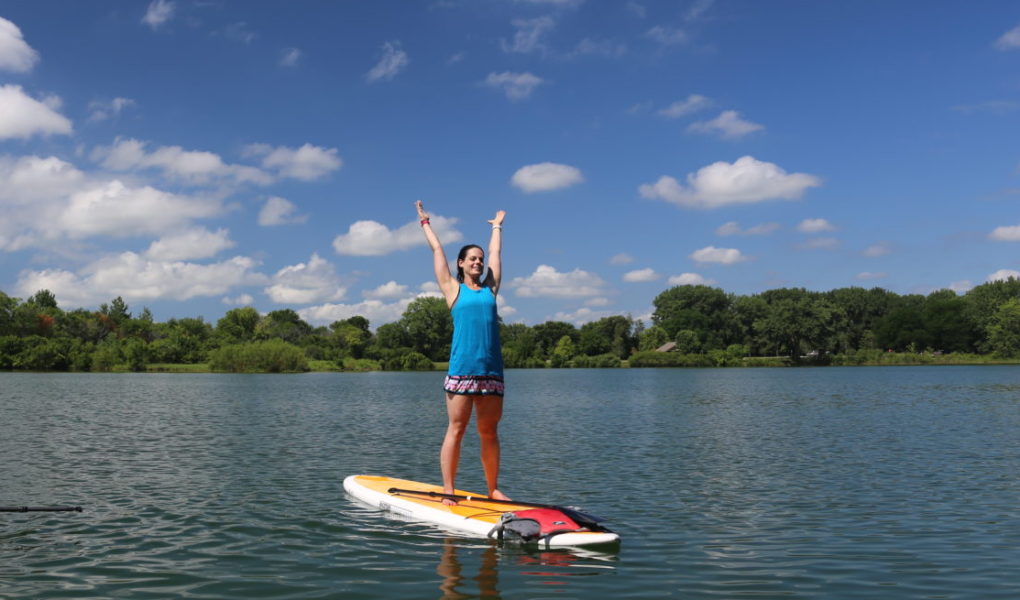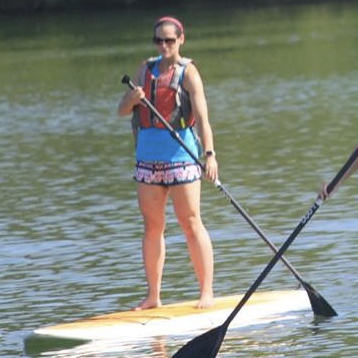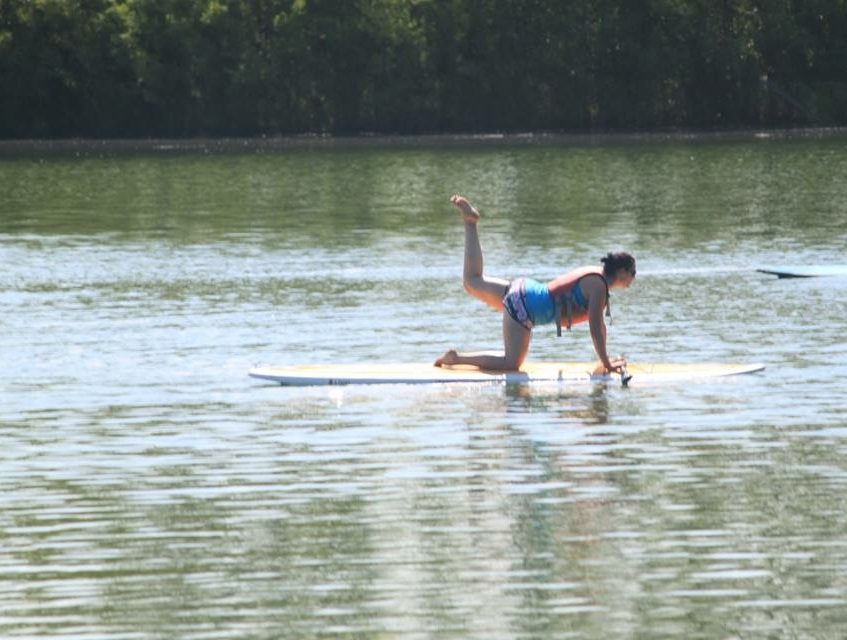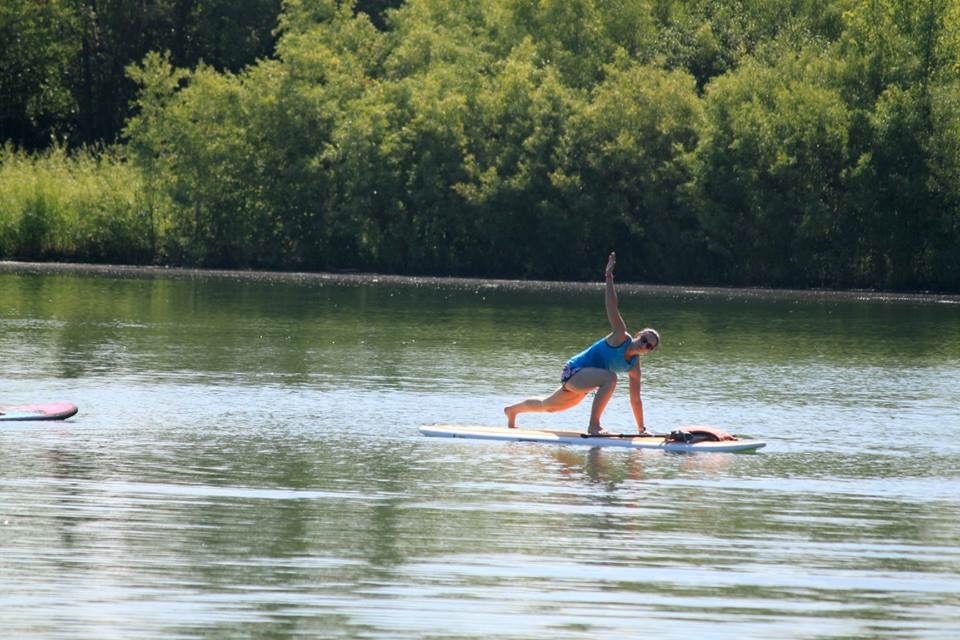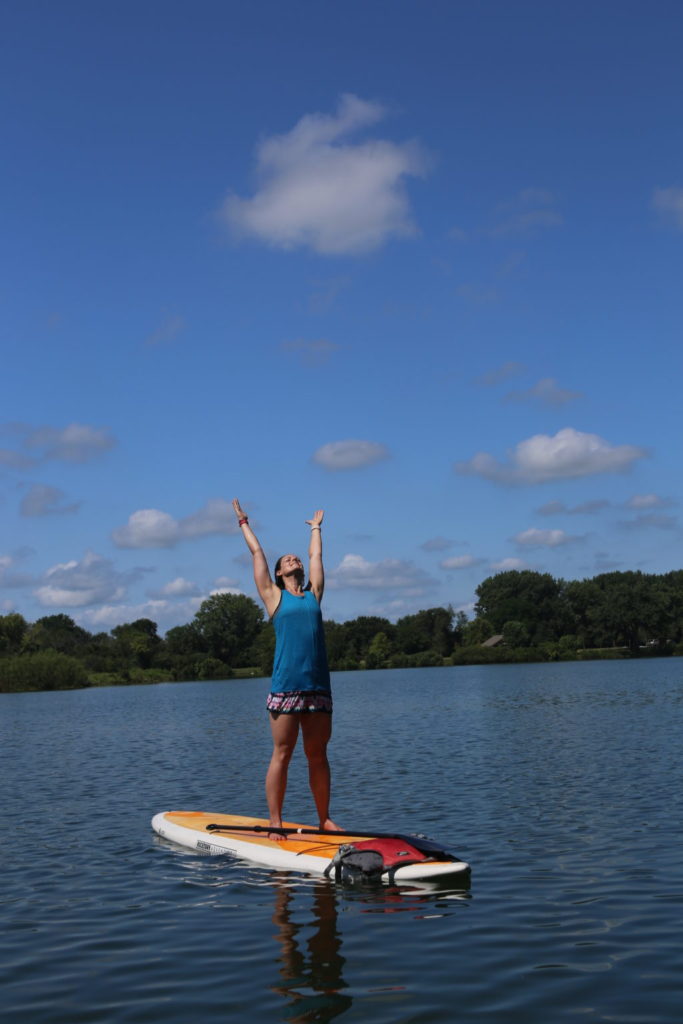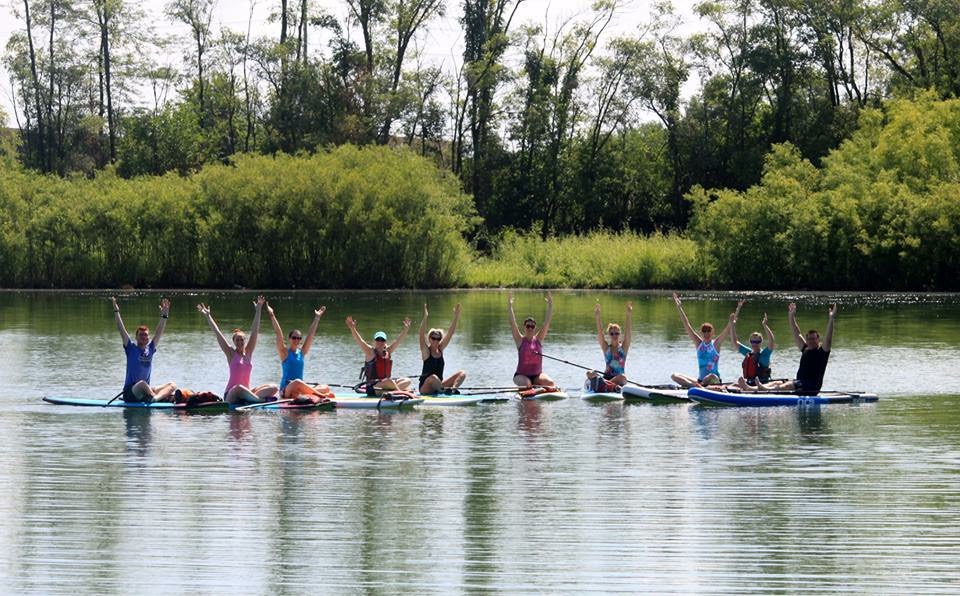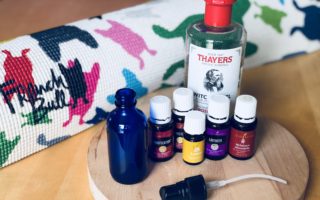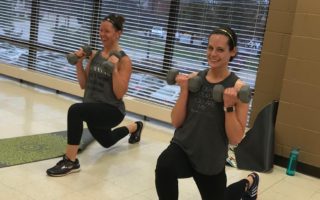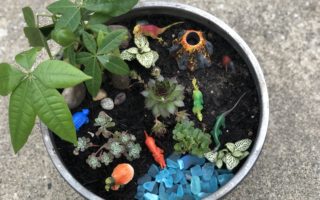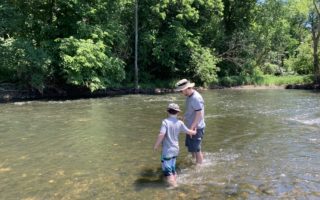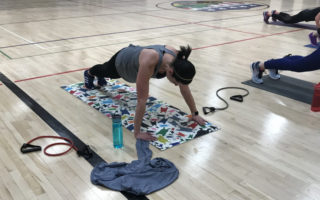10 Things to Know About Trying Stand-Up Paddleboard Yoga – Even If You’ve Never Tried Either One Before
A few key details about me before we dive (or more accurately, topple) into this post: My balance is generally terrible. My practice of yoga, if you can call it a practice, started approximately six months ago and is intermittent at best. My experience paddling anything is largely limited to the ping-pong table, except for a 10-minute kayaking adventure a few weeks ago and the kayaking class I failed in high school PE.
So when my best friend sent me the Facebook event for Yoga in Motion & Rocktown Adventures’ Stand-Up Paddleboard Yoga, I paused.
“I’ve never paddle-boarded before,” I told her.
“I’ve never paddle-boarded or done yoga before,” she countered.
I changed my Facebook response to “Going” to match hers.
Shortly thereafter, I found Celeste Barber’s Instagram post that summarized perfectly how this expedition was going to go down for the two of us:
But I’m game to try something new, so last Sunday, we trekked out to Jericho Lake in Aurora to give it a try. Here’s what I quickly found out:
- It’s actually not as hard as you think
My mantra for anyone considering this: If I can do it, you can do it. It really isn’t as hard as it seems. The paddleboard is both larger and more stable than I expected. It’s not like a surfboard, more like a heavy raft. There’s room to maneuver on it, and as long as you stay with your weight at approximately the center of the board, there is a fairly low risk of toppling off. Nevertheless …
- You should get your “sea legs” before trying anything fancy.
My first reaction to standing up on the board (slowly – ever.so.slowly) was, “oh $h*t.” If I could have physically clawed my toes into the board, I would have. I really didn’t want to fall into the lake at all, but I definitely didn’t want to be the first one to fall in.
But after just a few minutes of wobbly paddling, I felt more comfortable, and after about 10 minutes of experimentation, I felt confident that I could try out a few yoga poses, at least. Still …
- You might get wet.
The instructor told us at the start of class, “If you go into this planning to fall in, at least you won’t be surprised when it happens.” I thought we’d all be in the lake within 5 minutes of the start of class, and I was surprised when that prediction didn’t come true.
How wet you get depends on your level of comfort and your willingness to take risks. To be on the safe side, bring a towel and a change of clothes for after class. After all, it is summer and you are doing a watersport on a lake. You might want to dip your legs off the board to cool down, or you might want to jump in from the get-go to get it out of the way. Which leads me to the next point …
- You should just wear your swimsuit.
This isn’t yoga in the traditional sense, so yoga pants aren’t your best bet. The instructions recommend wearing athletic fabrics and avoiding cotton, which holds water and doesn’t dry quickly. I opted to wear my swimsuit bottoms (shorts) with an athletic tank. Other classmates wore tankini tops with athletic shorts over the bottoms.
Added benefit of the swimsuit: If and when you fall in the lake, you’ll be glad you did.
- You might get stuck in the weeds. (Or wait, that’s just me)
A word to the wise: Figure out the paddling motion before you get too far into it. Or be like me, don’t, and end up stuck in the weeds at the shoreline.
Yup, that definitely happened. A few minutes into the yoga sequence, my board was drifting further and further away from the group. I tried to paddle closer; I spun in circles. I got frustrated; I stopped trying. And I got closer and closer to the weeds at the shore. Insert allll the palm-face emojis here.
I stood there for awhile, hoping the guide would just come over and rescue me. And then I realized I could rescue myself. I focused, paddled forward (um, DUH, key motion here), and slooooooowly spun the board around to the correct orientation to rejoin the group.
Life lessons here, people: First, don’t stand around waiting for someone else to rescue you. You have all the tools and strength you need to rescue yourself. Second, don’t be afraid to laugh at yourself. In a different lifetime, this is the kind of situation that would have mortified me and ruined the whole morning. But this time, I just laughed. No harm, no foul. But a lot of willow leaves stuck in my hair.
- You might get sunburned.
Even at 9 AM, the sun reflecting off the lake made it HOT out there. I was glad I sunscreened fully and wished I brought a hat too. After two hours on the water in the full sun, falling into the lake might actually be a welcome cool-off. Be prepared for the sun and plan accordingly.
I was also prepared for bugs but was surprised at how few mosquitoes there were. A couple of flies buzzed around, but that was it. I think this was the first summer outdoor activity where I went home with no more bug bites than I arrived with.
- You might be sore the next day.
Because you’re balancing on a paddleboard on a gently rocking body of water, the yoga poses in the class flow were thankfully some of the more basic (read: stable). But it’s still yoga, so you are going to feel a lovely stretch and release in your muscles.
Be prepared for a little core workout too: To stay balanced, you are engaging your core muscles quite a bit throughout the class. When I woke up the next morning, I was surprised to feel it in my stomach, my thighs, and my calves – all the muscles I was tensing rock solid to help ensure I stayed on the board instead of in the water.
- You will learn to trust your limits.
I had a pretty good sense fairly quickly of what I could and couldn’t do. Child’s pose and tabletops, no problem. Chaturangas and downward dog, sure. I even got daring enough to push into a wobbly tilting shoulder stand and attempted a plow pose. But when the instructor encouraged us to try mermaid pose, where both hands and one foot are off the board at the same time, only anchored by one leg, I demurred. Mermaid pose was going to have me swimming like a mermaid for sure.
SUP yoga is no different than any other yoga class in that respect: Listen to your body and respect where you are at today. It’s your practice and your journey.
- You will find a moment of zen out there.
Somewhere toward the end of class, as we were winding down with some relaxation poses, I had a moment where I felt complete peace. The sun on my face, my hands trailing in the cool water, nothing but blue sky and white clouds all around me when I looked up, and the gentle rhythmic rocking of the water underneath the board. I’ve never experienced a more deeply relaxing savasana. That moment of synchronicity is why I want to keep expanding my practice of yoga in every way that I can.
- You will want to go back and do it again.
The two-hour class ended right when I felt like I was really getting the hang of it. As I paddled back to shore to disembark, I was already calculating if I had any more free summer Sundays to come back and try it again.
So, the question on everyone’s minds right now: Did I fall in the water?
The short answer is, yes. But not during the yoga class. No, I fell in when we were messing around on the boards afterward, and I was trying to capture some photos for this post. So, falling in was my own fault and I 100% deserved it. That’s what I get for getting cocky in my abilities!
After two hours in the summer heat on the board, the water honestly felt great, and so did I. I tried something new, embraced the experience from start to finish, and felt recharged physically and mentally.
Would you try stand-up paddleboard yoga? Want to join me at a local class? Let me know with #NeverDoneWithFun!

